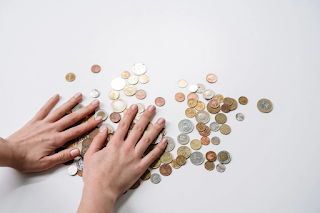In the digital age of transportation, ridesharing has revolutionized how people commute, offering convenience and flexibility at the tap of a button. However, as rideshare services like Uber continue to increase, safety and accident preparedness concerns have come to the forefront. Being prepared for potential accidents is essential in Phoenix, Arizona, where rideshare usage is prevalent.
Understanding Rideshare Services
As cities expand and transportation demands change, ridesharing services have evolved to accommodate the desire for quick, low-cost travel options. By leveraging technology, these platforms allow users to arrange for rides through smartphone apps, connecting them with nearby drivers in minutes. Because of their ease of use and flexibility, these services have become integral to millions of people’s everyday lives worldwide. However, introducing rideshare into the traffic ecosystem brings new challenges and considerations, especially when dealing with accidents. In such unfortunate circumstances, the expertise of an Uber accident attorney in Phoenix may prove invaluable to those seeking justice and compensation.

Risks Associated with Rideshare Apps
Rideshare applications have undoubtedly added a layer of complexity to the traditional transportation landscape. Among the noted benefits also lie potential risks. Users may encounter drivers who are less experienced or more tired due to the unregulated nature of work hours within the gig economy. Additionally, the vetting processes for rideshare drivers have been scrutinized, raising questions regarding passenger safety. The potential for distraction due to the app’s interface, the rush to fulfill more rides for higher earnings, and the use of personal vehicles not exclusively maintained for commercial use also contribute to the risk factor. Such multifaceted risks necessitate more vigilance from passengers and a robust understanding of one’s rights and resources.
Steps to Take Immediately Following a Ridesharing Accident
The primary concern following a ridesharing accident is the safety of all parties involved. Ensure that everyone is out of harm’s way, and if necessary, seek medical assistance by dialing emergency services. It’s critical to then notify law enforcement to secure an official report. Documenting the incident is a crucial step that should be noticed; use your smartphone to take photographs of the vehicles, location, and any injuries incurred. Information exchange between drivers, witnesses, and passengers is equally essential, ensuring each party has the appropriate contact and insurance details. The incident should also be promptly reported to the rideshare service to initiate their incident protocol, as your next steps, especially regarding compensation and legal advice, can be critically shaped by early actions.

The Role of Insurance in Rideshare Accidents
The insurance landscape is critical in distinguishing rideshare accidents from other vehicular incidents. Rideshare companies often provide a tiered insurance policy that activates based on the driver’s status at the time of the accident. Understanding the subtleties of this coverage is critical for everyone concerned. When a driver is ‘on the clock’ and has an active ride request, the rideshare company’s insurance is generally in effect, providing coverage to a specific limit. Outside these active periods, the driver’s insurance is the primary coverage, which may not fully account for commercial activity. This layered approach to coverage often leads to intricate disputes of liability and claims, underlining the importance of well-informed legal advice, particularly from professionals adept in the specific field of rideshare accidents.
Legal Considerations in Rideshare Accidents
Navigating the legal nuances in the wake of a rideshare accident can be a maze of policy stipulations and state laws. Liability can fluctuate between the rideshare company, the driver, and third parties, making it difficult to pinpoint who is at fault. There may be multiple avenues to explore when seeking compensation, including seeking damages for personal injury, loss of earnings, and emotional distress. Identifying the appropriate legal route often requires in-depth knowledge of state-specific transportation laws and the intricacies of insurance policies.
How to Report a Rideshare Accident
The journey to restitution starts with proper reporting of the rideshare accident. In addition to notifying law enforcement, it is critical to report the incident to the rideshare service. Most platforms feature an emergency or incident report function within the app, which can be an immediate channel to inform the company. Additionally, attaining a copy of the police report will provide an objective record of the event, which is advantageous for insurance claims or potential litigation. Keeping a personal account of the accident, including all communications with the rideshare company, medical treatments received, and any other related expenses, will significantly assist in maintaining a thorough and organized record of the incident and its repercussions.






